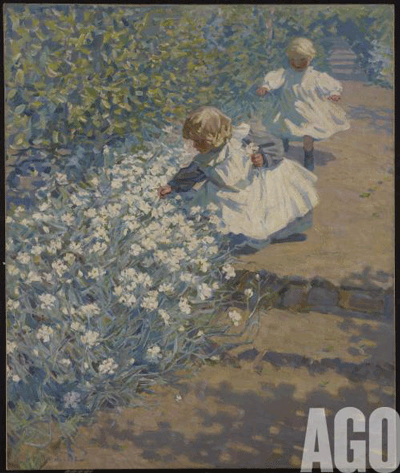Can a storm be beautiful? What does morning feel like for you? How do we experience light if we can’t see it? These were just a few of the questions asked throughout the Art Gallery of Ontario’s recent Facebook live talk Multisensory Moments. Offering a unique, multisensory experience, participants were invited to activate each of their senses (such as hearing, touch, and smell) in order to understand the AGO Collection in new ways.
A highlight of visiting an art gallery is the fact that individuals get to experience a work of art in person. It affords the opportunity to visually step into a painting, drawing, or other such work, and the time to reflect on one’s personal experience. Art galleries are refreshing in their ability to bring the community closer together literally, yes, but also socially and politically. As such, it’s necessary to be as sensory inclusive as possible to facilitate these connections. It makes sense that throughout history, such institutions have favoured the visual when it comes to exploring collections. Nevertheless, humans experience the world not only through sight but also through hearing, smell, taste, and touch. Art is about feeling, a sensory experience that goes beyond visual interaction.
When an individual is unable to go to an art gallery in person, whether due to time constraints or for accessibility reasons, modern technology provides a variety of online substitutes. However, it comes as no surprise that experiencing a work of art in person is different than viewing it virtually. Artists operate on a fully sensory level, meaning viewers often need a participatory approach to best understand their work. The AGO has ensured that anyone can enjoy this kind of multisensory tour, a significant benefit during a virtual era.
During this live talk, even before receiving a verbal description of the artwork, listeners already have a sense of scale well established. Rita Letendre’s painting, Daybreak is compared to the size of two twin beds lined up against a wall, and the mind is drawn into the large space that this piece fills. With such a recognizable comparison, it becomes clear that this is a sizable work. As viewers become oriented spatially, a recording of outdoor sounds soon begins playing. The sounds of birds chirping and flitting by suggests the cheerfulness of morning. Bringing sound into the equation offers individuals the opportunity to experience their interpretation of daybreak more personally, depending on what the sounds raise within them. While Letendre didn’t paint any birds in Daybreak, it does offer a new way to perceive this painting.

Deepening one’s experience through the use of sound can also be done with Rainstorm, an ink wash painting by artist Kazuo Nakamura. Viewers are invited to experiment with various movements in aid of constructing the sound of this rainstorm. Building such a soundscape, either alone or with a group, makes the viewer an active part of the artmaking. Perhaps there is an association between the feelings of getting caught in a storm with this monochromatic painting. How does entering a painting this way, through sound, make you see it differently?
The significance of smell is hardly lost on the Art Educator. Contemplating Helen Galloway McNicoll’s Picking Flowers, gardens are created by gathering, and then playing with and manipulating scents. Scents ranging from spices to honey are presented to the participant in an effort to evoke scent-related memories and implicit associations. Why? Well, unlike our other senses, scent has this mysterious ability to trigger strong memories.

This AGO live talk reveals that art may become more accessible by creating space for more immersive and collaborative experiences. The art world has the potential to start offering a new way of not only displaying art but a new way of experiencing it. Facilitating experiences that offer more than just a visual look at art, but a multisensory approach will help bring the work to life benefitting everyone.
